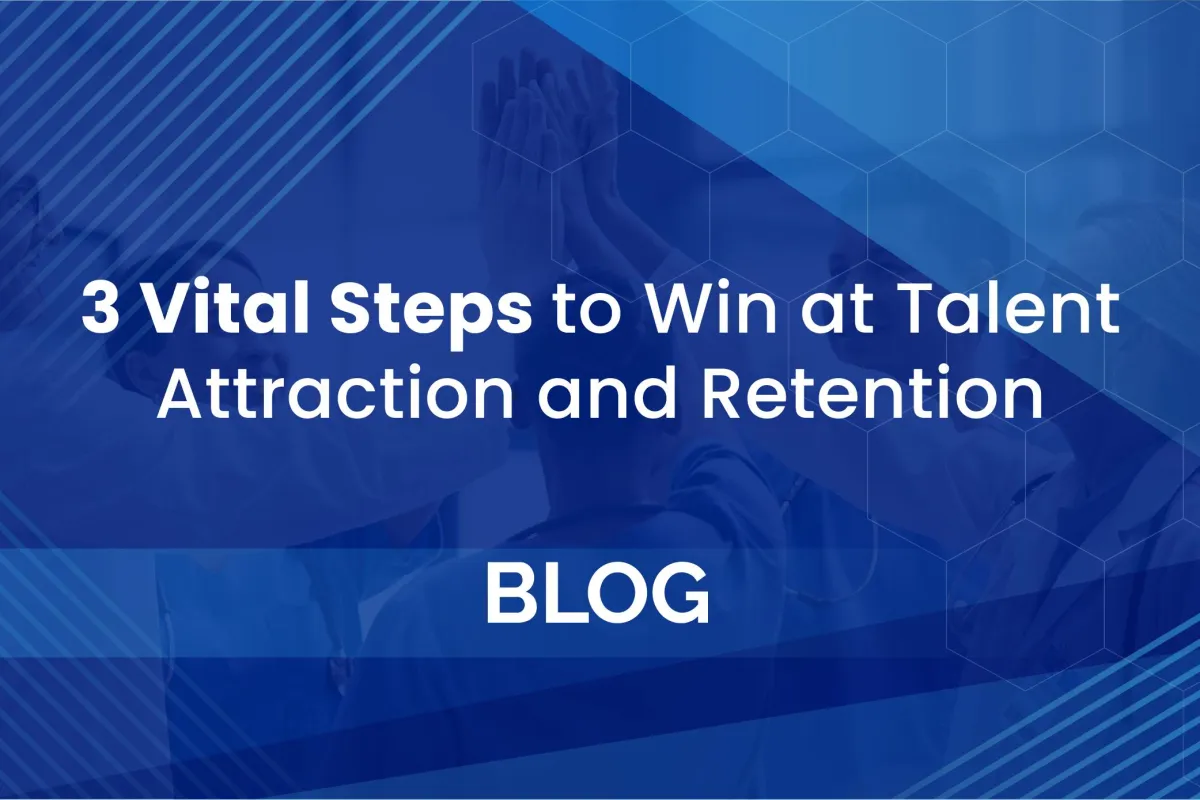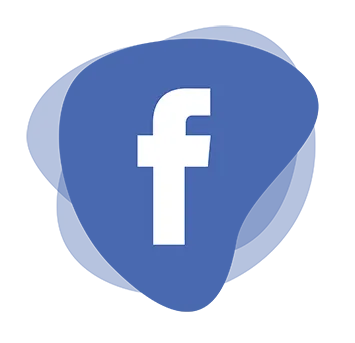WELCOME TO THB BLOG

3 Vital Steps to Win at Talent Attraction and Retention
3 Vital Steps to Win at Talent Attraction and Retention
In today's competitive business landscape, the employer-employee relationship hinges on more than just paychecks and PTO (paid time off). The upcoming Thanksgiving holiday reminds us that gratitude ranks high as an overlooked yet invaluable ingredient for worker retention.
Do actions speak louder than words? Louder than paychecks?
Studies show — yes.
Real wages eroded by inflation and out-of-pocket healthcare costs no longer scream, "We appreciate you!"
Roughly 40% of employees quit their jobs in 2021.1 Among them, a staggering 79% resigned primarily due to 'lack of appreciation.' 😱 But 89% of employers think workers jump ship for a higher salary when only 12% cited pay as their reason for leaving.2
Why do employees feel unappreciated? 🤔 Could it be because almost two-thirds feel their benefits team doesn't consider employees' needs when curating health benefits?
While half of employers surveyed say they encourage employee input on benefits, only 36% of workers agree.1
As shown by a McKinsey study, employers underestimate the importance of an affordable and convenient health plan to talent attraction and retention: Two-thirds of employers report health benefits as 'very important' to attracting and retaining top talent, compared to 82% of employees whose decision to accept a new role depends on the benefits provided.1,3
Today's blog bridges this disconnect by outlining how relevant health benefits tailored to your unique employee population demonstrate appreciation for your workforce and significantly boost talent retention and attraction.
We’ll review a 3-step transformative health plan strategy that tames turnover and saves money, all soaked in an attitude of gratitude:
Analyze: Perform a relevant needs assessment.
Empower: Show members how to get what they need.
Incentivize: Reveal what's in it for them
Refashion your health benefits expenditure from a mere budget item into a gratitude-based investment in your most valuable asset: your employees.

Step 1: Analyze: Perform a relevant needs assessment
Employee benefits aren't a one-size-fits-all proposition. A myriad of factors, including member demographics and social determinants of health, weigh heavily on the healthcare priorities of a workforce. Claims data and employee surveys help employers align their offerings with employees' needs and expectations, making workers feel seen. Over time, this builds a culture of gratitude and optimizes both employee retention and the company's bottom line.
Utilizing claims data
Claims data provides a treasure trove of information about what services employees are using. Is there an uptick in mental health utilization? Did your organization see a post-pandemic baby boom? Were there chronic diseases neglected during the pandemic that now demand higher levels of attention? Are members opting for out-of-network coverage? Why? What's it costing them? By analyzing this data, employers can identify gaps in their current offerings and adjust their benefits packages accordingly.
The power of employee surveys
While claims data reveals historical plan utilization, it doesn't reflect what employees want. Surveys supply insight into the perceived needs of the plan beneficiaries — you may be surprised by what you learn. For example, studies reveal that over 30% of 18-41-year-olds want pet insurance 🐶 as an optional benefit.4 Also, nearly 40% of 42-57-year-olds surveyed want mandatory PTO. 🪂 At first glance, PTO may not appear to be a health benefit, but the request emanates from the need for mental health rest and recovery.
Hone your soft skills
As Gary Vaynerchuk, Chairman of VaynerX and CEO of VaynerMedia, aptly says, "Most organizations are only worried about the money. And when you care about profits over people, you will be vulnerable. When [organizations] are able to keep their people longer, their profits will be greater — the way to keep your people longer is by making it good for them."
There's no better way to say it. When your employees win, your entire organization wins.
Show your employees you care by integrating gratitude into annual enrollment communications. Highlight how their feedback shapes their benefits and how the plan design can save them money without foregoing healthcare. Above and beyond communication requires extra time and energy, but it's invaluable for long-term company success and profitability.
The employer-employee disconnect over resignations, benefits, and appreciation extends to mental health benefits.
Mental health benefits are center stage
One-size-fits-all plans offered by big-box mega-carriers aren't usually cost-effective because member groups vary wildly. Some populations need robust maternity benefits, while others need more aggressive chronic disease management.
However, across the board, the American Psychological Association says the demand for mental health services has mushroomed 🍄 over the last few years — up by as much as 84% since the start of the pandemic.5 Two in five employees cope with anxiety and depression, causing mental health referrals to nearly double from 2020 to 2021.6
Mental health providers find themselves beyond capacity and combating burnout as this "mental health tsunami" rages on 🌊 — meanwhile, the average wait time for behavioral health services hovers around seven weeks.5,7
Traditional, limited Employee Assistance Programs (EAPs) embedded in life or disability policies fall short. Most EAPs only provide 3-5 therapy sessions with zero telehealth access — they serve more as an afterthought than a solution-oriented benefit, making expanding EAP coverage, including telehealth access, vital to meeting employee needs.14
The skyrocketing demand makes mental health benefits a top priority for job seekers, but again, there’s a huge disconnect. A PeopleKeep survey found that 63% of employees want mental health coverage.1 Still, only 5% report having adequate services, which may explain why only 64% of employees feel their employer prioritizes their mental health, even though 96% of employers say they do.1
🎯 Again, actions speak louder than words.
Your organization must focus on employee mental healthcare because up to 81% of job seekers rank employers' mental health support among their top considerations when looking for future work or deciding to stay in their current role.3,8
While essential to talent attraction and retention, mental health benefits also save healthcare dollars in the long run. Anxiety and depression cause 6x more lost work days and account for 70% of workplace disability expenses, but treatment and management can reduce absenteeism by 30%.1,3
Ultimately, cookie-cutter benefits don't get the job done anymore. Acknowledging and creatively acting on your workforce's unique healthcare needs demonstrates thoughtful leadership. The next step engages members with the plan, boosts utilization, and secures savings.

Step 2: Empower: Show them how to get what they need
Are inaccessible benefits beneficial?
According to a Harris Poll, over 54% of your employees may not understand what your health plan covers.9 😱 Worst yet, 44% of employees surveyed said they feel uncomfortable asking for help from their HR department — they'd rather ask their friends or family members for advice!10
A 2022 Forbes Advisor survey of 2,000 Americans revealed these rather jolting knowledge gaps on a multiple-choice quiz11:
➡️ 77% don't understand what co-insurance is (30% weren't familiar with the concept at all)
➡️ 46% were stumped when asked what a co-pay is
➡️ 45% couldn't identify the correct definition of a deductible
The complex healthcare landscape we ask employees to navigate leaves far too many of them lost in a sea of confusion.
Leadership must empower them effectively with a two-pronged approach:
✔️ Provide patient advocacy services.
✔️ Commit to an ongoing, multimodal, multi-lingual member education campaign.
Taking these two steps enhances the employee experience and directly translates to better healthcare outcomes and savings for your company.
How patient advocacy saves your organization healthcare dollars
A patient advocate, also called a patient concierge, serves as a trustworthy resource your members can turn to for guidance as they strive to make sense of our convoluted healthcare system. The behind-the-scenes inner workings of the system appear shrouded in mystery for most of your workforce. When intimidation sets in, members decide to avoid all but life-or-death care. Down the road, you pay big time as minor, easily treatable health issues morph into catastrophic claims. Advocates facilitate member access, decision-making, cost clarity, and care coordination from beginning to end.
Advocates peel back the curtain on the inverse relationship between cost and quality in healthcare. Unlike an expensive bottle of wine or fancy dinner, costs go down as healthcare quality goes up. Inefficiencies, administrative fees, and the quality-starved practice of fee-for-service healthcare jack up prices unnecessarily. Advocates help members source the highest quality care for the lowest possible price to reduce medical errors, waste, and complications for the best outcomes.
Patient advocates coordinate value-minded healthcare efficiently to produce savings you can reinvest into your workforce and innovation.
How member education saves your organization healthcare dollars
Employees want autonomy and control over their healthcare, which requires they fully understand what benefits are available, how to access them, and what care will cost. This mandates ongoing, multimodal, multi-lingual member education.
Health benefits educational campaigns and communications must be:
✔️ On-going throughout the year
✔️ Repetitive: Some members' ears won't perk up until they need care
✔️ Multimodal: written, video, text message, email, meetings, signage
✔️ Multi-lingual: Information must be available in as many languages as is necessary to reach every member
The time and energy it takes to teach employees about their benefits speaks volumes about your concern for their well-being, above and beyond their work productivity. These campaigns function as a sound financial strategy because employees who see their needs recognized feel appreciated, which boosts their loyalty and commitment to the organization.
Education and ongoing communication topics should include:
⭐ How to connect with their patient advocate to process and execute informed healthcare decisions
⭐ The inverse relationship between cost and quality
⭐ Depersonalized claims data and employee survey findings that inform leadership's health benefits decisions
⭐ Appreciation for employee contributions to healthcare savings
⭐ The available incentives for choosing high-quality, lower-cost healthcare providers
Employers who empower their members to engage with the health plan have a powerful advantage and influence over a top expense. They enjoy higher employee satisfaction, retention, productivity, and new talent attraction.
The pièce de résistance to corporate growth through gratitude is the "What's in it for me?" also known as incentives.

Step 3: Incentivize: Reveal what's in it for them
The healthcare industry is more than just labyrinthine; it's expensive.
About 41% of Americans have medical debt — the leading cause of personal bankruptcies. Tack on epic inflation, and you've got a recipe for disaster. The last thing you want is members postponing needed care. Inevitably, delayed care backfires with higher claims. So, the third step in your health plan transformation is to incentivize the behaviors you want to see more of.
👍🏽You want members to utilize their benefits.
👍🏽 You want members sourcing high-quality, lower-cost providers.
👍🏽 Your employees want the exact same thing.
It's a win-win when you pair desirable behaviors with low or no out-of-pocket costs for the member.
Common services you want to incentivize with a low or $0 co-pay include:
Primary care: Primary care generates better outcomes and long-term savings. A primary care provider (PCP) can manage the vast majority of health issues, including urgent care and chronic disease management. Reducing emergency department visits and improving continuity of care boost employee satisfaction, data collection, and savings.
Preventative care: Molehills become mountains if not detected early. Making preventive care easily accessible and affordable saves lives and gobs of healthcare dollars.
Specialty care, when sourced with the assistance of a patient advocate, ensures providers are high-quality. The cost and quality of a knee replacement varies wildly from provider to provider. Patient advocates have the cost and quality data to steer members to practitioners with the best outcomes for the best price. It pays off to incentivize patient advocacy with $0 out-of-pocket.
Generic medication: Generic drugs are identical to their name-brand counterparts without the cost of marketing and research tacked on. $0 co-pays encourage patients to try these medicines before considering costly brand-name drugs.
International pharmacy: A 2021 study showed that U.S. drug prices can be as much as 344% higher than manufacturers' list prices in other countries.12 Those countries provide the exact same drugs to the U.S. for significantly lower prices, usually shipped directly to the member's home. Pass those savings on to the patient to encourage their use of the international pharmacy.
Biosimilars: Prescriptions for expensive biologic medications, often used for autoimmune diseases, cancer, and diabetes, grew by 50% from 2014 to 2018 and continue to rise.13 Essentially, biosimilar drugs are generic versions of brand-name biologics that cost considerably less. Implement step therapy guidelines requiring members to try biosimilar treatment for $0 out-of-pocket before they sink their money into brand name biologics.
Second-opinion services reduce a member's fears and concerns about invasive, risky, big-ticket, or possibly unnecessary procedures or treatments. They supply the member and the plan with confirmation that a treatment is indeed necessary prior to moving forward.
When you empower and incentivize your workforce to engage with their healthcare benefits, you show appreciation by fulfilling a deep desire for affordable, easily accessible healthcare. Exceptional benefits are the foundation of an exceptional organization.
Gratitude in action
Traditional health insurance costs have out-paced inflation over the past three years, and there's no evidence the rising prices will slow down. Employers looking to remain competitive through the worker shortage are taking massive action to reform their health benefits strategy.
Your health benefits should be a tangible extension of your appreciation for your workforce — strategically tailored to your employees' needs and values based on claims data and employee surveys. All the while, ongoing communication and education should empower and incentivize members to seize control of their health.
Corporate prosperity mandates employers reject the status quo and stop slamming the easy button each year by renewing with the big box mega-carriers. Instead, the control and savings of independently self-funding a strategically customized health plan sends a strong message to your team: "You matter to us — both on and off the clock."
You'll find that expressing your gratitude through your health benefits is a win-win endeavor that bolsters the future of your organization.
Sources:
4https://www.forbes.com/advisor/business/best-employee-benefits/
5https://www.apa.org/news/press/releases/2021/10/mental-health-treatment-demand
6https://www.wtwco.com/en-us/insights/2023/01/infographic-employers-prioritize-employee-mental-health
8https://www.apa.org/pubs/reports/work-well-being/2022-mental-health-support
9https://www.justworks.com/lp/benefits-knowledge-snapshot
10https://medcitynews.com/2022/08/employees-want-help-with-their-health-benefits-survey-finds/
11https://www.forbes.com/advisor/health-insurance/confused-by-health-insurance-terms/
12https://www.rand.org/news/press/2021/01/28.html
13https://www.ncbi.nlm.nih.gov/pmc/articles/PMC7255927/
14Taylor Miles,M&S EAP Services,personal communication, 8/24/23





